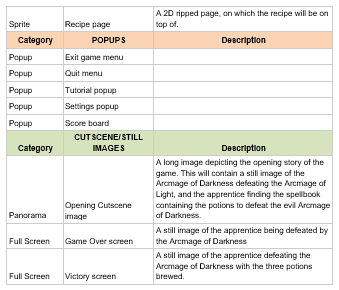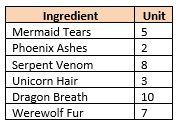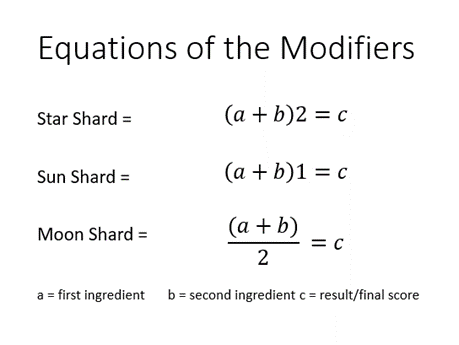Game Design - First Draft and Iterations
- jesskesson
- Apr 13, 2021
- 4 min read
Using the idea generation ideas discussed in the previous post of this unit, I created a Game Design Document of my original idea, and then added to it with new ideas. I saved the document in iterations each new day I worked on it to keep track of my progress.
The first day I worked on the document, I kept things simple, and only added details about the story of the game and some ideas for the mechanics. In the following days, and went in for more detail on these mechanics as well as made button maps of the main menu and game screen. I also created a flowchart of how the game plays.
Here is my Game Design Document in its third iteration, which had most of the details laid out. My game idea was the 'Arcmage's Aprentice,' which was a game about a child studying under a mage who must create three potions in order to defeat an evil foe.
There would be three levels, which would steadily increase in dificulty, which I created a graph for in the document pages above. Each level would give the player instructions on how to brew a potion, with the later levels having instructions that fade in and fade at random intervals. This, doubled with a countdown clock, would create a good amount of tension and motivate the player to play the game.
Here are the button maps for the main menu and the play screen. I included a life system in the top left corner, as well as a timer, which I felt would add challenge to the game.

Here's an example menu popup. All of them will be designed this way, with two buttons. The options presented on those buttons may be different for other popup menues. For example, the popup menu to return back to the menu during the game may not present the option of quitting the game entirely, which could be done from the menu.
Here are larger versions of the charts and graphs I created for the Game Design Document. Some parts of these are unfinished, as I decided to rework my ideas to create something simpler.
I was worried that my game would be too complicated for me to programme, so I reworked the ideas, instead going back to the idea stated in a previous post about a simple combination game. This means I can still use most of the ideas from my original pitch. I only really had to rework pieces of the story to fit in more with this idea.
This idea is far more doable, and doesn't feel overwhelming like my original idea. I would've loved to have created my original idea, but I feel as though I wouldn't have known what to do about half the mechanics I planned for. This new idea is also far less convoluted and is easier to explain to others.
To make the game more interesting than a simple combination game, I added in a third factor to the mix, which I've called the 'modifiers.' There are three modifiers, and they each have a different effect on a concoction. Each of the ingredients has a different numerical value (which won't be disclosed to the player), which will be affected by the modifiers.
This idea had a few problems, as there isn't goal for the player, which means there's no motive to play besides trying out all the possible combinations. I thought on this for a while before deciding that the numerical value would be used to tell the player how strong the potion they made is. This will give more meaning to the scores given in the result screen.
Another problem with this version of the game is that it uses less of the ideas I generated, and instead only focuses on one aspect that I brainstormed. This is unfortunate, but I can't think of a way to remedy this without completely
As a stretch goal, I may add a randomiser button on the main menu, which could give the player a random potion of a random strength to try and create, which would give the player a motive for playing the game.
Here is a step by step of how the game will be played. This is also included in the Game Design Document above.
Since I reworked the idea, I had to go back and relabel the buttons, as well as remove things like the timer and lives, as those are no longer needed in this iteration of the game.
Here are the new graphs and charts I created for this iteration, which includes a chart of possible results, which I colour coded to make it more understandable. I also created equations for the modifiers, which helped me get a clearer picture of what they'll do in game. Since this game is basically just maths disguised with potions, it's important for me to understand how everything will be calculated.
This idea is by far more achievable than my original, and I'm far more confident in my ability to create this as a game, or at least have a few mechanics working by the end of this unit. I'm looking forward to creating this in Unity and going through the rest of the unit.













































































Comments